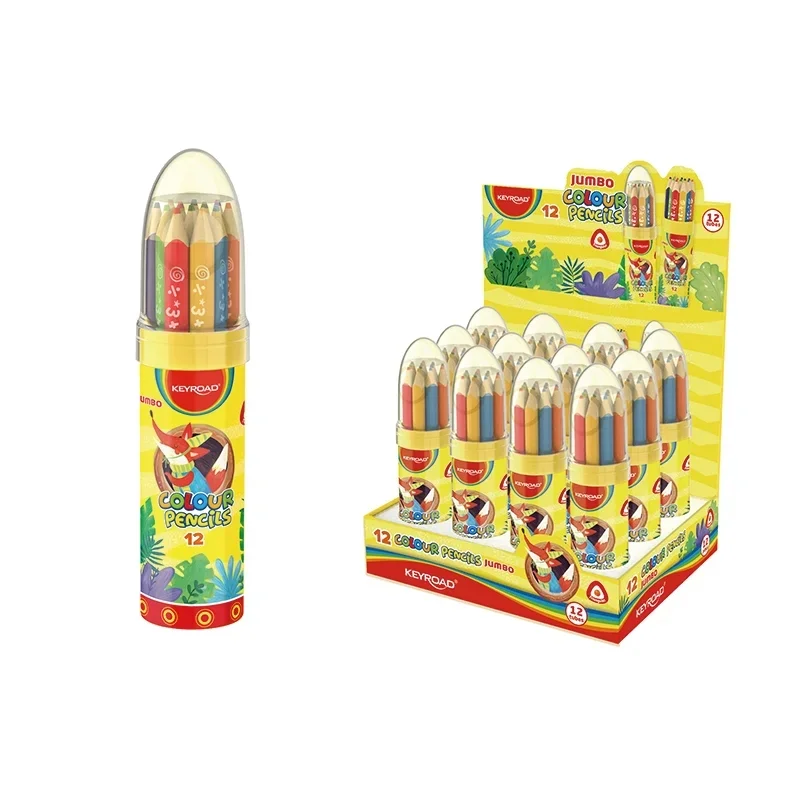Colored pencils are a common drawing tool, and their material and quality standards have a crucial impact on the drawing effect and user experience. This article will discuss the materials and quality standards of colored pencils to help readers better understand and choose the colored pencils that suit them.
Material of colored pencils
The material of colored pencils mainly includes three parts: refill, wooden shaft, and coating.
1. Refill
The refill of a colored pencil is a key factor in determining its drawing effect and quality. The material of the refill is usually a mixture of pigments, fillers, and binders. The pigment is the main component that determines the color and saturation of the refill, the filler is used to increase the volume and hardness of the refill, and the binder is used to bind the pigment and filler together.
Different brands and models of colored pencils have different refill materials and formulas. Generally speaking, high-end brands of crayons use higher-quality pigments and fillers to ensure their color saturation and painting effect. However, low-end brands of crayons may use inferior pigments and fillers, resulting in problems such as not bright colors and easily falling off.
2. Wooden pole
The wooden shaft of colored pencils is the support and protection part of the refill and is also an important factor in the user's hand feel. Generally speaking, the wooden poles of colored pens are made of natural wood or artificial wood, such as poplar, pine, birch, bamboo, etc. High-quality crayons usually use natural wood, because natural wood has the advantages of hard texture, is not easy to deform, and is comfortable to the touch. The low-end brands of crayons may use artificial wood, such as cardboard, plastic, etc. Although these materials are low in cost, their texture is poor, they are easy to break and deform, and they feel poor to use.
3. Coating
The coating of colored pencils is used to protect the wood shaft and improve its appearance. The material of the coating is usually composed of resin, wax, and other materials. High-quality crayons are usually coated with an environmentally friendly resin coating, which has the advantages of wear resistance, waterproof, and is not easy to fall off. However, low-end brands of colored pens may use poor-quality coating materials, resulting in problems such as easy peeling off and wear and tear.

The quality standards of colored pencils
The quality standards of colored pencils refer to some technical indicators and requirements that need to be met in the process of production and use. Common pen quality standards include the following aspects:
1. Refill color and color saturation
The color and color saturation of colored pencils is its most basic quality indicators. High-quality colored pens should have bright, full, and uniform colors, and are not easy to fall off and fade. However, low-quality color pens may have problems such as not bright colors and uneven colors.
2. Core hardness and breakage rate
The hardness and breakage rate of colored pencils is important factors for their service life and user experience. High-quality colored pens should have moderate hardness and are not easy to break and break. However, low-quality colored pens may have problems such as low hardness and easy breakage.
3. Wood quality and coating abrasion resistance
The wood shaft quality and coating abrasion resistance of colored pencils are important factors in their appearance and longevity. High-quality colored pens should have the advantages of hard texture, not easy to deform, and wear-resistant coating. However, low-quality color pens may have problems such as the deformation of the wooden pole and easy peeling off of the coating.
4. Environmental protection and safety
The environmental protection and safety of colored pencils are important factors in their impact on the human body and the environment. High-quality colored pens should be environmentally friendly, non-toxic, and harmless. However, low-quality colored pens may contain harmful substances, and be flammable and explosive.
In short, choosing a colored pencil that suits your needs to consider many factors, including color, hardness, wood quality, coating wear resistance, environmental protection and safety, etc. I hope this article can help readers better understand and choose the color pens that suit them.
Explore the types and uses of colored pencils
How to choose high-quality colored pencils?
The choice of colored pencils: how to choose the color pencils that suit you.
https://www.johnshenstationery.com/Materials-and-quality-standards-of-colored-pencils.html
